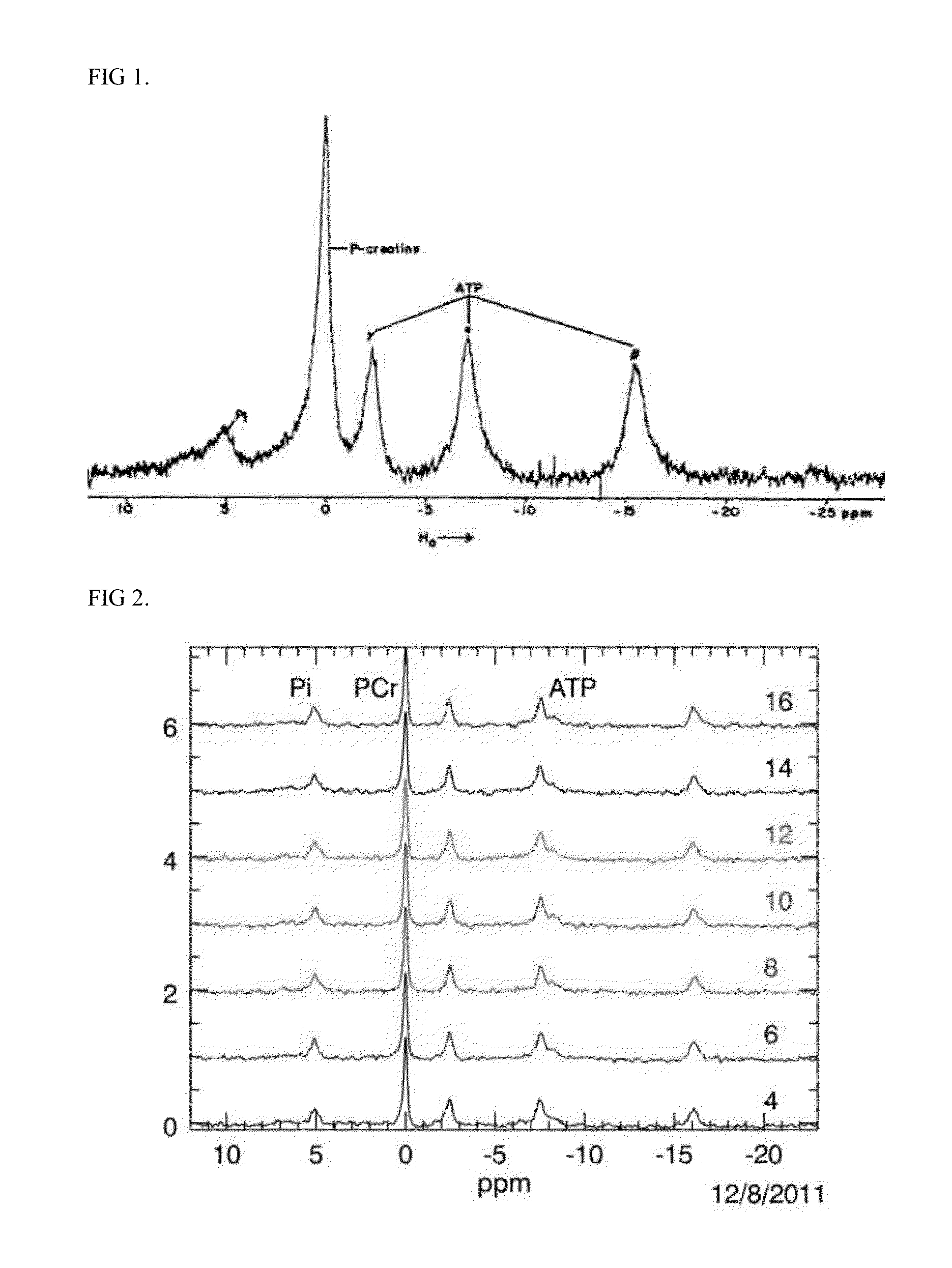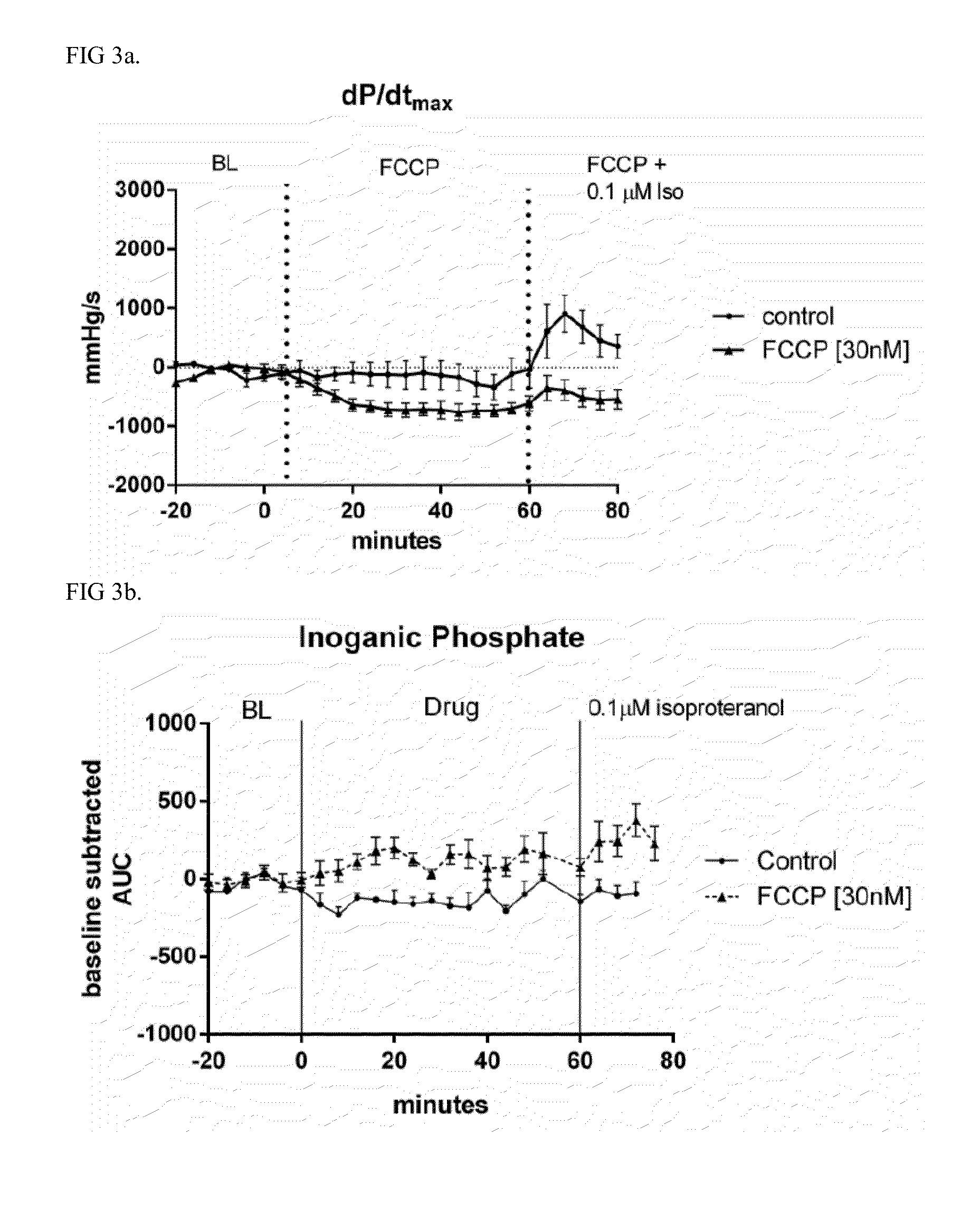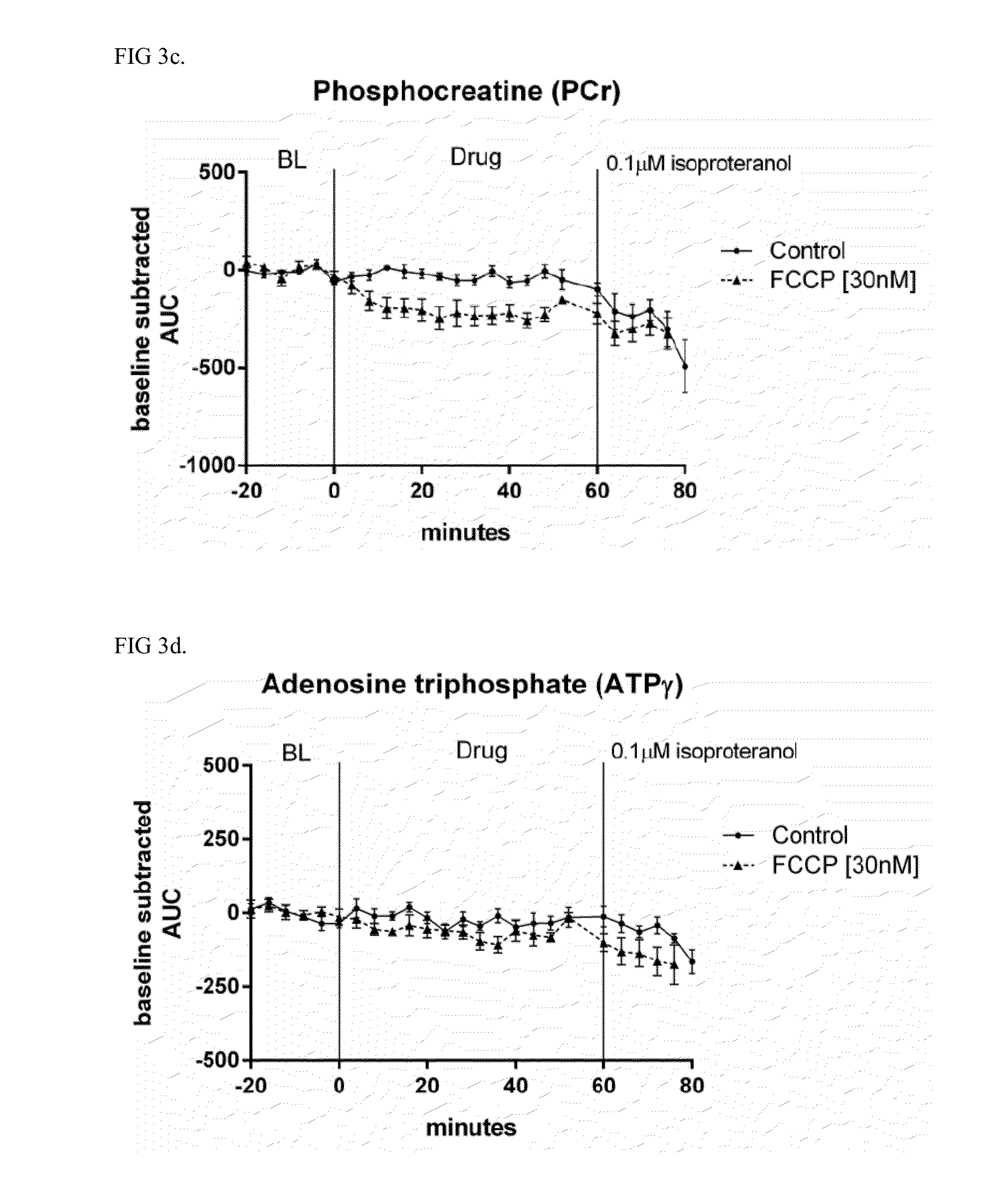Use of 31p nmr spectroscopy of whole heart energetics for detection of drug-induced cardiotoxicity
a whole heart energetics and spectroscopy technology, applied in the field of use of 31p nmr spectroscopy of whole heart energetics for detection of drug-induced cardiotoxicity, can solve the problem that more than 30% of drugs are eventually removed from the mark
- Summary
- Abstract
- Description
- Claims
- Application Information
AI Technical Summary
Benefits of technology
Problems solved by technology
Method used
Image
Examples
examples
[0041]The following Examples are provided to illustrate certain aspects of the present invention and to aid those of skill in the art in practicing the invention. These Examples are in no way to be considered to limit the scope of the invention in any manner.
example i
[0042]A heart, in this case isolated from rat and perfused using the Langendorff method, is image guided by 1 H magnetic resonance imaging and magnetic resonance spectroscopy is performed for 31P found in the high energy phosphogens ATP, phosphocreatine (PCr), and inorganic phosphate (Pi) in an upright 11.7 Tesla NMR at 161.99MHz (FIGS. 1 and 2).
[0043]The energetic spectra from the whole heart was averaged every 4 minutes before and after drug exposure. PCr, ATP alpha, beta, and gamma, and Pi peak height and area, and pH calculated from the resonance shift in Pi (pHi=pK+log[(go−gB) / gA−go)] (Hayashi Y. et al J Appl Physiol 1993) are done using Para Vision, Bruker Inc. (Billerica, Mass.) and ITT Visual Information Solutions (Boulder, Colo.). Heart contractility (left ventricular pressure) and heart rate is simultaneously acquired on an Emka IOX data acquisition system.
[0044]31P spectra is acquired for 20 minutes prior to drug application. The drug of interest is then applied for 1 hou...
PUM
 Login to View More
Login to View More Abstract
Description
Claims
Application Information
 Login to View More
Login to View More - R&D
- Intellectual Property
- Life Sciences
- Materials
- Tech Scout
- Unparalleled Data Quality
- Higher Quality Content
- 60% Fewer Hallucinations
Browse by: Latest US Patents, China's latest patents, Technical Efficacy Thesaurus, Application Domain, Technology Topic, Popular Technical Reports.
© 2025 PatSnap. All rights reserved.Legal|Privacy policy|Modern Slavery Act Transparency Statement|Sitemap|About US| Contact US: help@patsnap.com



